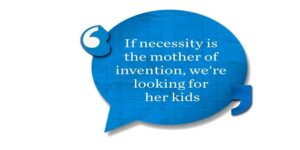
How to Hire in 2024: Four Success Factors
If you follow tech industry news, you’re no doubt aware of ongoing layoffs at Google. Early this year, a New York Times reporter asked me

If you follow tech industry news, you’re no doubt aware of ongoing layoffs at Google. Early this year, a New York Times reporter asked me

In recent years, diversity, equity, and inclusion (DEI) has become a red-hot topic among employers and human resources professionals who plan and manage these initiatives.

In a world filled with uncertainty, one thing is certain. “Business as usual” is no longer a realistic strategy. So, during unusual times like this, is

We’ve all seen alarming headlines about “The Great Resignation.” Some observers say it shows no signs of letting up. McKinsey recently called it the “quitting
The TalentCulture #TChat Show is back live on Wednesday, September 23, 2015, from 1-2 pm ET (10-11 am PT). Last week we talked about importance of the

What does it take to meet top tech talent on today’s terms? Kevin Grossman weighs in after Dice exchanges insights with the #TChat crowd

Employers: Are you hiring tech talent for the right reasons? Take a closer look at workforce motivations…

As technology grows more integral to daily life, demand for tech-savvy talent is relentless. How can employers hire the best?

Remote work is on a roll. But it takes more than home offices and an internet connection to succeed. What really matters? The TalentCulture community weighs in

What’s ahead in talent management for 2014? Exciting times for social media and employer brand strategy!

How can employers move the meter on their job candidate experience? Experts share survey results with the #TChat crowd

Want loyalty and engagement from your employees? If you’re a leader, the best place to look for solutions may be in your own leadership style

Don’t miss the hot ticket at this year’s HR Tech Conference, as #TChat goes live with experts at a very special Employee Engagement Roundtable. Join the conversation October 7!
Passion or profession: In a tough job environment, is it an either/or choice? Kevin W. Grossman looks deeper…
The employment picture is bleak. But that doesn’t mean that business opportunities are dead. Historically, startups have created more jobs than established companies, in good times and bad. So perhaps more of us should embrace entrepreneurship?
Today’s workforce has been rocked with massive changes. Job security is nonexistent, contingent workforce has ballooned, and among remaining employees, engagement has tanked. Does the rise of a free agent nation mean stronger relationships with employers?
“All I know is that sometimes you have to be wary Of a miracle too good to be true All I know is that sometimes